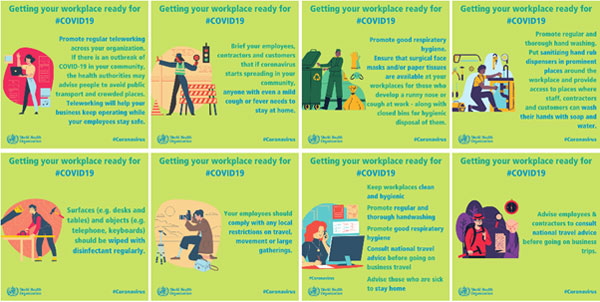How to Manage Social Distancing in Offices?

We are all hearing terms like ‘the new norm’, a new way of life, and so on. And all these are in fact true. Things are changing to new standards. A new temporary permanent is settling in, for how long, we don’t know. This is visible in every aspect of life - whether we stay back at home, avoiding social contact as much as possible or heading out to the office.
Yes, offices are once again resuming. But still, people have to maintain social distancing, owing to the threat of spreading of the virus, which is still in the air. So, while people suit up and step out to claim their desks again and reinitiate the chitter-chatter and buzz the office environment, here are some steps for admins and authorities to ensure social distancing while resuming work.
- Redesigning office space
One of the top-priority tasks at hand is to restructure the office layout to allow a safe distance between the employees. The sitting desks should either have cubicle walls or should be far apart to keep people at least 6 feet away from each other. Common areas like cafe, washrooms, receptions, etc., have to be made minimum or no-contact zones. The number of seats should be limited and at a safe distance in the reception area. Wherever there is a possibility of people queuing up, marking should be made at a safe distance on the ground where they can stand. In short, the possibility of people gathering needs to be eliminated.
- Remote Work
Those officials who do not need to necessarily come to the office to continue their work can be asked to stay back at home. People have been working from home for more than two months now and have been accustomed to that system. So those who can work on their laptops, while coordinating with their teammates over calls, should be asked to continue working from home. This will work both ways, reducing their chances of contamination as they may travel by public transports and to the employees at the office through them. The guideline to work on reduced capacity may also have repercussions on the occupiers. According to a Knight Frank article, managing the work at 30% or 50% capacity may lead the leaders to look out for additional leasing space to accommodate all the employees.
- Changing Working Hours
Organizations need to ensure that there are fewer employees at a given time in the office. To implement this, the companies can either introduce flexible working hours so that it can be adjusted for them. This will reduce the buzz around the office during peak hours, reducing the chances of contamination. Or else, the companies can initiate different shifts to continue work in a staggered manner. This will straight away reduce the density by 50%, reducing the chances of viral spread.
- Reducing Meetings
Reopening of offices means once again those morning stand-ups, mid-day meetings or some other last-minute meetings. But this is the time to not have those meetings and avoid them at any cost. This means even if people have joined back offices, virtual meetings are going to be a part of work. More usage of emails and chats should be encouraged to reduce face-to-face conversations.
- Work Collaboration
The implementation of the changes may bring minor chaos to the team. This calls for a work collaboration system in place. All the team members should stay active and connected with each other efficiently to finish off tasks within the timeline. This stands truer for employees who may work from their homes. Constant updates on work, using task collaboration platforms, etc. can prove quite helpful for team’s productivity.
- Restricting Staff
Although life has to go back to normal, and more so for the staff such as office boys, cleaners, etc., offices need to restrict their aids. One of the major reasons being their mode of communication. Most of the staff travel through public transports, which severely increases the risk. Hence, limiting or restructuring the need for office help can be beneficial for all. One way to optimize it can be introducing alternate day work system for them. This will suffice the office’s need for help and will also resume the staff’s work to help them earn their salaries.
- No Visitor Policy
Further extending the social distancing policy, the organizations should disallow entry of any outside visitors, unless really required. All the parcels and deliveries meant for the employees should be delivered at the main gate to the security guard, and the employees can then collect from them. Visitors who are allowed to enter the premise for some important reason should make an official entry at the main gate. This is to keep a track, in case contaminations spreads in the premise due to them, the source can be tracked down through their registered details.
Here’s a guide released by WHO on getting the workplace ready during COVID-19.

While it is important to resume back our normal lives, it is equally important to take certain precautions to resume it safely. Following these measures at the office to practice distancing will only help in transforming the crisis into a chance. Following government guidelines and taking maximum precautions to end the lockdown and going back to the office is the only way of not letting go off the lockdown months to waste and restarting the work safely.

